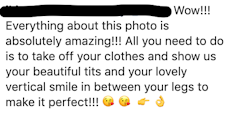How highly sexualised imagery is shaping 'influence' on Instagram
- Written by Jenna Drenten, Assistant Professor of Marketing, Loyola University Chicago
Australians are some of the most active social media users in the world and Instagram is particularly popular. One in three of us have an account, with more than 9,000,000 monthly active users. The rise of Instagram reflects our increasingly visual culture, with 45% of Australians having taken a selfie and uploaded it to social media.
But Instagram isn’t just a place for personal photos, it’s big business. The platform is the birthplace and breeding ground of influencer marketing: a relatively new, multi-billion dollar industry, projected to grow from US$6 billion in 2018 to US$10 billion in 2020.
Influencers generate digital content and gain the attention of a “following” on social media through representations of their everyday lives, in which various commodities and brands play a vital role. The larger the audience, and the more attention they receive, the greater the monetisation potential.
Most influencers, are women, who aspire to build a personal brand. There are more than 558,000 influencers on Instagram who have more than 15,000 followers.
Theirs is a precarious form of work, with none of the traditional workplace protections and they can can spend an extraordinary amount of time and effort generating the “perfect shot” to upload. It’s a job that is always “on”, with the platform functioning 24/7 and delivering a constant stream of notifications.
The body plays a crucial role in influencers’ selfies. Conforming to rigid standards of attractiveness and femininity is fundamental to their gaining attention. This means a lot of work for them but also has broader cultural effects in shaping attitudes about body image.
Read more: Social media, the 'bikini bridge' and the viral contagion of body ideals
One of the easiest ways for women to gain attention on social media is through a highly sexualised aesthetic, which is increasingly “pornified”, i.e., borrowing a “look” associated with mainstream, pornographic imagery.
We analysed 172 female influencers’ social media pages over a period of four months. They ranged from women who willingly promote brands with no remuneration to those who market themselves as a personal brand. Our sample of influencers was drawn internationally and sourced from “shoutout pages”, which act as virtual currency to build popularity and thus gain attention. We analysed the images, interactions, and comments of the influencers studied.
We found a continuum of pornified self-representations by these social media influencers on Instagram. This ranged from “softer” references – where influencers pose to highlight sexualised body parts and employ “porn chic” gestures such as gently pulling their hair, touching their parted lips and squatting with legs spread to the camera – to images that were hard to differentiate from mainstream commercial pornography.
Here, pornified representations grab viewers’ attention with the goal of being monetised to sell products, such as protein powder, gummy vitamins, or detox tea.
Our data does not show an enormous breadth of ways in which women might wish to be sexual, but rather a fairly monotonous repetition of “sexiness” and sexual availability that is shaped by porn chic.
The women in our study ranged from having hundreds of followers to millions. Those with a higher number of followers were associated with a more explicitly pornified aesthetic – sometimes using the Instagram platforms to redirect viewers to more direct paid-access pornography on external sites such as OnlyFans.com or private messaging applications like Snapchat and WhatsApp.
But all of this monetised attention comes at a cost of significant sexual harassment, which many argue is poorly policed by Instagram. Monitoring the women’s social media feeds, we found that many female influencers are subject to sexually aggressive comments, objectifying messages from followers, and a lack of privacy in their personal lives. Influencers in our study were subject to sexual solicitation and even physical threats.
Such comments range from: “I would love your art work but it’s your bum I want”, or “love to spank and kiss your gorgeous ass”, to the more aggressive “Turn around before I take out my dick and beat you…”
 Sexually aggressive comment on an influencer’s posted image.
Instagram.com
Sexually aggressive comment on an influencer’s posted image.
Instagram.com
Rebuking harassment or deleting hostile comments also comes at a cost for influencers. More engagement, including these kinds of comments, results in more potential attention for a given post. This, in turn, is directly tied to their ability to monetise influence.
Hence, we found that reading such harassment, and making the choice to not delete it, simply becomes “part of the job”. The fear of losing a partnership with a brand is always a concern, so influencers build their audience by engaging with followers in upbeat, positive and convivial ways.
The intensity, volume and public nature of this harassment makes social media influencers particularly vulnerable. They do not have the support of a traditional workplace and employer in dealing with these constant and inescapable interactions.
As well as having negative consequences for the influencers themselves, the trend towards a pornified aesthetic also has consequences for gender equality, more broadly. It’s an aesthetic that positions women and girls as existing for men’s sexualised consumption.
Authors: Jenna Drenten, Assistant Professor of Marketing, Loyola University Chicago



